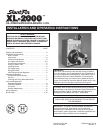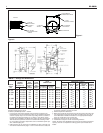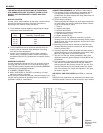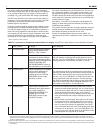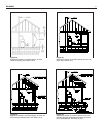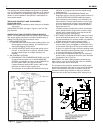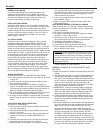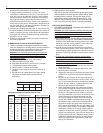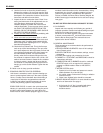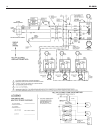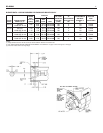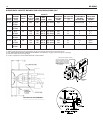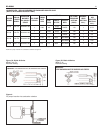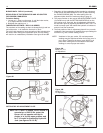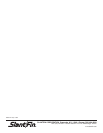
6. Use the flue brush to clean the pinned flueways
b
etween the sections.† A wire brush may be used
to remove any carbon accumulation that may have
d
eveloped in the combustion chamber.Vacuum the
loose soot and debris from the boiler.
7. Inspect the burner combustion head. Clean if nec-
essary and make sure all the adjustments are cor-
rect. (See burner data pages for the burner
installed.) Replace oil nozzle with new one and
r
eadjust electrodes.To insure proper burner opera-
tion ONLY THE NOZZLES SPECIFIED IN THIS
M
ANUAL OR ON THE BURNER LABEL SHOULD
BE USED FOR REPLACEMENT.
8. Protect all of the fireside surf
aces by swabbing with
neutral mineral oil.
9. Close main cast iron b
urner door (door on which
burner is mounted). Make sure that the entire seal
(fiberglass rope) is making good contact with the
boiler casting when replacing 3/8-16 x 1” long hex
head bolt and tightening.
10. Check the flue collector seal. This is the flat rope
seal on top of the heat exchanger.The rope must
be in place adjacent to the long bosses on front and
rear sections and adjacent to the short bosses on
the intermediate sections. The rope should be
directly under the flue collector flanges when the
flue collector is replaced. Use the two 1/4-20 x 3/4”
washer hex head screws to fasten the flue collector.
In order to assure a proper seal be sure that the
flue collector is compressing the flat rope and not
hanging up on the section bosses.Tighten the two
screws.
D.If boiler room is damp, provide ventilation.
II. PROVIDING PROTECTION FOR FREEZING
Anti-freeze is sometimes used in hydronic heating sys-
tems to protect against freeze-up in the event of power
failure, or safety control shutdown when the building is
unoccupied. It should be recognized that unless the
building is kept above freezing temperature by some
means, the plumbing system is not protected.
PROPYLENE GLYCOL is used in the quick-freeze food
industry; it is practically non-toxic. Its use may be permit-
ted when indirect water heaters are used. When anti-
freeze must be used, inhibited propylene glycol is recom-
mended. Useful information on the characteristics, mixing
p
roportions, etc. of glycol in heating systems is given in
Technical Topics No. 2A, available from the Hydronics
D
ivision of GAMA, 35 Russo Place, Berkeley Heights, NJ
07922. Consult glycol manufacturers for sources of propy-
lene glycol.
D
O NOT USE ETHYLENE GLYCOL BECAUSE IT IS TOXIC.
I
II. OIL BURNER
Inspect and clean annually and following any period of
i
mproper operation. Recheck and adjust settings as speci-
fied for burner model and nozzle size.
Set burner air and draft regulator, using test instruments
to obtain recommended CO
2
and draft without smoke.
See the Burner Data page in this manual that corre-
sponds to the burner installed.
IV. GENERAL MAINTENANCE
These operations are recommended to be performed at
regular intervals:
A.BOILER HEATING SURFACES: clean off all coatings
found. Reseal covers.
B.BOILER CONTROLS: check contacts, settings, correct
functioning.
C.PIPING: check piping and accessories for leaks.
D.CHIMNEY or STUB VENT and BREECHING: check for
obstructions and leaks.
E.COMBUSTION AIR TO BURNER: check for continued
POSITIVE supply of air as required. Air needs are
greatest in coldest weather. Refer to AIR SUPPLY,
page 3.
F. WATER SYSTEM: check
1. System to be full of water and pressure to remain
stable (between 12 psi and 25 psi).
2. Air-control system: noise and air binding in radiation
should not occur.
3. Water lines: slightest leaks should be corrected.
G.BOILER ROOM AIR SUPPLY: air vents should be open
and free of obstruction. See page 3.
† A flue brush (2-1/4" dia.) is supplied with boiler.
Replacements are available from dealer or
hardware stores.
XL-2000
9



